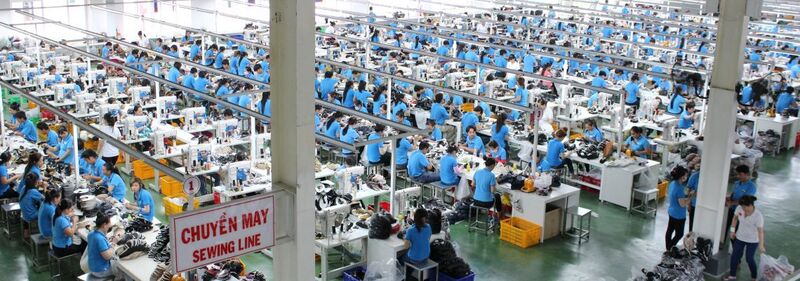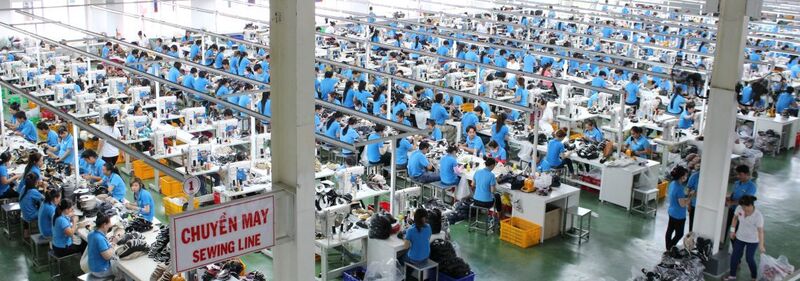Vietnam footwear industry needs to reduce simple manufacturing methods
Mr. Pham Chi Dung, head of the light industry sector - the Ministry of Industry and Trade said about the orientation of the footwear industry at the International Conference on Exports of Footwear in Vietnam in 2017 in HCM City that in the next years, Vietnam footwear industry need to restructure to product according to the added value, with the priority given to the production of raw materials and auxiliary materials in order to increase the localization rate, reduce simple manufacturing methods, enhance designing ability, focus on production of medium and high-end products and trendy ones for export and domestic market.
Therefore, the demand for raw materials for the production also doubled or tripled. In the coming years, if not developing supporting industries for the production of raw materials, the Vietnamese footwear industry will face a great dependence on imported raw materials and will not be able to achieve the objectives of plans.
Mr. Dung said that the Ministry of Industry and Trade is drafting the "Master plan for the development of Vietnam's footwear industry by 2025 with vision to 2035". Accordingly, it is expected that in 2025 Vietnam will reach over 2 billion pairs of footwear, which is twice as much as in 2016 and export turnover is over $30 billion. It is predicted that by 2035, Vietnam could produce more than 3 billion pairs of footwear with an export turnover of $45 billion.
In the long term from now to 2025, even in 2035, Vietnam's footwear industry will have stronger competitiveness in terms of labor costs, per capita income, economic and export market policies than China. In the period of 2010-2016, Vietnam's average income is only USD 2,200/person/year, while China is USD 8,200/person/year. The rising cost of production in China puts pressure on foreign investors. With the average monthly wage of $400 a month in China, the China's footwear industry is stable considerably.
Regarding the footwear export market, Vietnam is still the second largest exporter of footwear to the US with an export growth of 14.2% in 2016. While the footwear export turnover of China to the United States has decreased significantly.
As a result, the footwear industry should continue to promote and encourage footwear manufacturers to build factories to make leather, PU and other materials and accessories. The Ministry of Industry and Trade will consider the proposal of the government for industrial areas specialized in the production of raw materials with the support from the government by incentive policies.
In order to take advantage of opportunities and overcome the challenges, Vietnamese footwear enterprises have to find the way to grow by itself by increasing investment in modern technology and equipment, participating in the global supply chain to bring Vietnam to become a major footwear manufacturing center of the world.
By 2016, Vietnam has nearly 1,700 footwear workshops nationwide, of which 800 are large enterprises with 1.2 million workers, of which the FDI sector employs 75% of total labor force and 80% of the export turnover.
Vietnam exports footwear to nearly 50 countries with main markets from USA, EU, China and Japan. Production of leather and raw materials in Vietnam has reached the localization rate of 40-50%.










